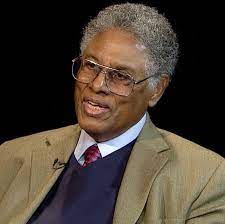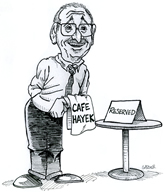Writing in Newsweek, Martin Kulldorff and Jay Bhattacharya explain how Fauci fooled America.” Three slices:
When the pandemic hit, America needed someone to turn to for advice. The media and public naturally looked to Dr. Anthony Fauci—the director of the National Institute of Allergy and Infectious Diseases, an esteemed laboratory immunologist and one of President Donald Trump‘s chosen COVID advisers. Unfortunately, Dr. Fauci got major epidemiology and public health questions wrong. Reality and scientific studies have now caught up with him.
…..
While anyone can get infected, there is more than a thousand-fold difference in mortality risk between the old and the young. After more than 700,000 reported COVID deaths in America, we now know that lockdowns failed to protect high-risk older people. When confronted with the idea of focused protection of the vulnerable, Dr. Fauci admitted he had no idea how to accomplish it, arguing that it would be impossible. That may be understandable for a lab scientist, but public health scientists have presented many concrete suggestions that would have helped, had Fauci and other officials not ignored them.
What can we do now to minimize COVID mortality? Current vaccination efforts should focus on reaching people over 60 who are neither COVID-recovered nor vaccinated, including hard-to-reach, less-affluent people in rural areas and inner cities. Instead, Dr. Fauci has pushed vaccine mandates for children, students and working-age adults who are already immune—all low-risk populations—causing tremendous disruption to labor markets and hampering the operation of many hospitals.
…..
A fundamental public health principle is that health is multidimensional; the control of a single infectious disease is not synonymous with health. As an immunologist, Dr. Fauci failed to properly consider and weigh the disastrous effects lockdowns would have on cancer detection and treatment, cardiovascular disease outcomes, diabetes care, childhood vaccination rates, mental health and opioid overdoses, to name a few. Americans will live with—and die from—this collateral damage for many years to come.
In private conversations, most of our scientific colleagues agree with us on these points. While a few have spoken up, why are not more doing so? Well, some tried but failed. Others kept silent when they saw colleagues slandered and smeared in the media or censored by Big Tech. Some are government employees who are barred from contradicting official policy. Many are afraid of losing positions or research grants, aware that Dr. Fauci sits on top of the largest pile of infectious disease research money in the world. Most scientists are not experts on infectious disease outbreaks. Were we, say, oncologists, physicists or botanists, we would probably also have trusted Dr. Fauci.
But at least these children are probably enjoying a lower risk of exposure to SARS-CoV-2, which as we now know is a benefit for which no price is too high to pay. (HT Sunetra Gupta)
Tessa Dunlop, writing at UnHerd, describes the cruelty of Britain’s Covidocracy even toward the elderly. (HT Martin Kulldorff) A slice:
Public health concerns over the spread of the virus have seen the human right to safety bulldoze other basic needs. Rectifying this imbalance is crucial as a second Covid-19 winter looms with large sections of the public already demanding increased restrictions. What will they mean for the extreme elderly? The average care home inhabitant is over 85, with a life expectancy of just two-and-a-half years, many won’t live to see the end of the winter. Has anybody asked them what they want? Do we really want to condemn yet more to a lonely death?
When I met her in the summer of 2020 Beryl may well have been the last ATS WWII Physical Training instructor alive and aged 99, with swollen legs in a heat wave and a pandemic, life was hard work. She worried about the modern world — “I think there’s more wrong today. It’s harder for you lot.” Things were certainly harder for Beryl who was struck by the contradictory game of national statistics: “In the Second World War in order to win they didn’t talk about death tolls, but in this current battle it is all we focus on.”
She wasn’t killed by Covid-19, but in February this year Beryl died, and her close friend sent me a message: “She rarely complained and she didn’t give up, but sadly, her last year was more like imprisonment since she was unable to see her friends thanks to coronavirus.” Like so many others, Beryl’s last months were collateral damage in Britain’s war against the pandemic.
Writing in the Telegraph, Sunetra Gupta explains why “waning immunity should not alarm us.” Two slices:
Many of the measures taken to curb the spread of Covid were justified on the basis that we were dealing with a novel pathogen and therefore had no idea about the nature of immunity to SARS-CoV-2 or the clinical consequences of infection.
The truth is, however, that SARS-CoV-2 belongs to a family of coronaviruses with which we already have some acquaintance. Unlike measles and mumps, these viruses do not induce lifelong immunity to further infection. Instead, herd immunity is maintained through continuous re-infection. Fortunately, immunity to severe disease and death does not decay on the same timescale and so repeat infections are rarely dangerous unless the immune system itself has begun to fail due to old age and other factors.
The presentation of the epidemic in waves across much of the world can be readily explained by the waning of natural immunity against infection on a timescale of six months to a year (which is shorter than I expected) within a background of seasonal variation in transmissibility. It is much harder to ascribe these patterns to the imposition and withdrawal of restrictions on mixing, although these interventions will no doubt have had some effect on specific dynamics.
…..
Neither does the waning of immunity against infection warrant the imposition of restrictions which we now can be certain cause extreme harm to the economically vulnerable and to children and young adults throughout the world. Once the vulnerable have been protected, there is no logic to putting any further resources towards preventing the spread of infection.
Augusto Zimmermann asks if Canberra can “be held accountable internationally for human rights abuses from state lockdown laws.” Two slices:
The Western Australia Premier has recently ordered 75 per cent of WA’s workforce to get vaccinated or face job losses or a possible $20,000 fine. Mark McGowan has also decided that he won’t be opening the state borders to unvaccinated people.
A major objective seems to be the preparation of the citizen for a docile surrender of all their fundamental rights, always in the name of an overly protective, benevolent state. In the name of the “health” of the people, politicians can now happily implement the most unthinkable and atrocious perversities.
…..
In the Preamble of the World Health Organisation’s Constitution, the word “health” is conceptualised as a “state of complete physical, mental and social well-being and not merely the absence of disease or infirmity”. However, to allegedly defeat an apparently deadly virus, draconian measures have caused millions of people to endure highly stressful and traumatic situations, including home confinement, job losses, financial ruin, and a whole host of mental illnesses and challenges. These measures are unlawful not only in accordance with our system of democratic parliamentary government but also under international law. They unlawfully affect the enjoyment of our fundamental rights and freedoms, including freedom of speech, association, movement, expression, and privacy.


 Government breeds advocacy groups that lobby it to do what it wants to do anyway – expand what it is doing.
Government breeds advocacy groups that lobby it to do what it wants to do anyway – expand what it is doing. The real question is not which policy or system would work best ideally, but which has in fact produced better results with far from ideal human beings. Even with the more modest task of evaluating different policies within a given system, the real question is not which policy sounds more plausible, or which would work best if people behaved ideally, but which policy in fact turns out to produce better results with actual people, behaving as they actually do.
The real question is not which policy or system would work best ideally, but which has in fact produced better results with far from ideal human beings. Even with the more modest task of evaluating different policies within a given system, the real question is not which policy sounds more plausible, or which would work best if people behaved ideally, but which policy in fact turns out to produce better results with actual people, behaving as they actually do. Progress, if not organic, is nothing but change.
Progress, if not organic, is nothing but change. I have observed the disappointment of visitors from wealthy cultures when colorful people dressed in brilliant clothes stop, pat themselves down, and take out cell phones in response to insistent ringing sounds. It’s not authentic! It ruins the whole trip! Those people are being robbed of their culture! They’re victims of global capitalism! The arrogance of those who want to keep the poor in their native environments, like lizards in a terrarium, is startling.
I have observed the disappointment of visitors from wealthy cultures when colorful people dressed in brilliant clothes stop, pat themselves down, and take out cell phones in response to insistent ringing sounds. It’s not authentic! It ruins the whole trip! Those people are being robbed of their culture! They’re victims of global capitalism! The arrogance of those who want to keep the poor in their native environments, like lizards in a terrarium, is startling.
